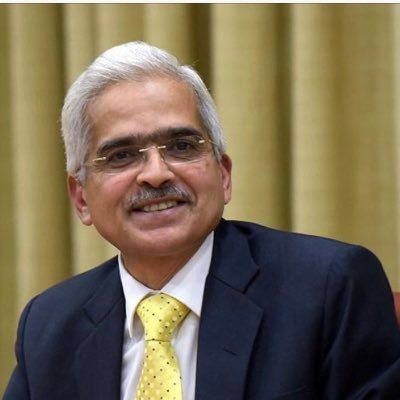 Membership of the RBI-operated Centralised Payment Systems (CPSs) – RTGS and NEFT – currently limited to banks, with a few exceptions, is now proposed to be available to non-bank payment system operators like Prepaid Payment Instrument (PPI) issuers, card networks, white label ATM operators and Trade Receivables Discounting System (TReDS) platforms regulated by the Reserve Bank. This facility is expected to minimize settlement risk in the financial system and enhance the reach of digital financial services to all user segments, the central bank said in a statement after the meeting of the Monetary Policy Committee on 7 April 2021.
Membership of the RBI-operated Centralised Payment Systems (CPSs) – RTGS and NEFT – currently limited to banks, with a few exceptions, is now proposed to be available to non-bank payment system operators like Prepaid Payment Instrument (PPI) issuers, card networks, white label ATM operators and Trade Receivables Discounting System (TReDS) platforms regulated by the Reserve Bank. This facility is expected to minimize settlement risk in the financial system and enhance the reach of digital financial services to all user segments, the central bank said in a statement after the meeting of the Monetary Policy Committee on 7 April 2021.
In another decision of the 6-member Monetary Policy Committee (MPC), headed by Governor Shaktikanta Das, it was decided to keep the repo rate unchanged at 4%, while the reverse repo rate also was kept unchanged at 3.35%. The central bank was widely expected to keep key interest steady amid a surge in covid cases in the country. This is the fifth time in a row that the RBI has maintained a status quo on policy rate. Das said the central bank will keep inflation at the targeted level and also added that the recent rise in covid cases has created uncertainty over economic growth recovery.

The MPC also unanimously decided to continue with the accommodative stance as long as necessary to sustain growth on a durable basis and continue to mitigate the impact of covid on the economy, while ensuring that inflation remains within the target going forward. The marginal standing facility (MSF) rate and the bank rate remain unchanged.
Speaking about the economic growth for the financial year 2021-22, Das said the MPC kept the GDP estimate for FY22 unchanged at 10.5%. The first quarter GDP growth outlook is estimated at 26.2%, 8.3% in the second quarter (Q2FY22), 5.4% in the third quarter (Q3FY22) and 6.2% in the fourth quarter (Q4FY22).
Speaking about inflation, he said the MPC revised the consumer price index (CPI) inflation to 5% during the last quarter of the financial year 2020-21 (Q4FY21) and forecast the CPI inflation at 5.2% in the first half (Q1 and Q2) of FY22, 4.4% in Q3 and 5.1% in Q4.
He said while the headline inflation at 55 in February remains within the tolerance band, some underline constituents are testing the upper tolerance level. Going forward, the food inflation trajectory will critically depend on the temporal and special progress of the southwest monsoon in the 2021 season.
Liquidity Guidance
The governor said the central bank’s endeavour has been to conduct liquidity management operations conducive for promoting orderly market conditions. This approach has yielded dividends, he said, adding it has facilitated the successful completion of central and state government borrowing programs of close to ₹22 lakh crore at record low costs with elongated maturity during 2020-21. It has also facilitated significant amount of private borrowing through corporate bonds, commercial paper and debentures.
He said despite the recommencement of 14-day variable rate reverse repo (VRRR) auctions since 15 January, liquidity absorbed through the fixed rate reverse repo has steadily increased from a fortnightly average of ₹4.3 lakh crore during January 16-29 to ₹4.9 lakh crore during 30 January-31 March 2021. Reflecting the surplus liquidity, reserve money rose by 14.2% (yoy) as on 26 March 2021 driven by currency demand, while money supply (M3) grew by 11.8% (yoy) (as on 26 March), with bank credit growth at 5.6% (yoy) (as on 26 March). In view of the success of VRRR and given the rising level of surplus liquidity, it has now been decided to conduct VRRR auctions of longer maturity as indicated in the Revised Liquidity Management Framework announced on 6 February and the amount and tenor of these auctions will be decided based on the evolving liquidity and financial conditions, Das said. In fact, by paying a higher rate of interest on liquidity absorptions through the VRRR auctions, the RBI is indirectly expanding liquidity.
G-SAP of ₹1 lakh crore
The central bank scaled up its open market operations (OMOs) in February and conducted 5 special OMOs (operation twists) in February and March; increased the amount for the operation twist (OT) auction on 4 March from ₹10,000 crore to ₹15,000 crore; and adopted an innovative asymmetrical special OMO (purchase of ₹20,000 crore and sale of ₹15,000 crore) on 10 March to reinforce the compression of term premia as well as to inject liquidity which drew a favourable market response. These were clear signals that the RBI will support the market with adequate liquidity through various instruments in its toolkit. The liquidity impact of OMOs could be gauged from the fact that we made net outright purchases amounting to ₹3.13 lakh crore during 2020-21.
For the year 2021-22, the RBI will commit upfront a specific amount of open market purchases of government securities with a view to enabling a stable and orderly evolution of the yield curve amidst comfortable liquidity conditions. The endeavour will be to ensure congenial financial conditions for the recovery to gain traction. For Q1 of 2021-22, therefore, it has been decided to announce a G-SAP of ₹1 lakh crore. The first purchase of government securities for an aggregate amount of ₹25,000 crore under G-SAP 1.0 will be conducted on 15 April 2021.
The positive externalities of G-SAP 1.0 operations need to be seen in the context of those segments of the financial markets that rely on the G-sec yield curve as a pricing benchmark. In addition, the extension of Held-to-Maturity (HTM) dispensation opens up space for investments of more than ₹4.0 lakh crore. We will also continue to deploy our regular operations under the LAF, longer-term repo/reverse repo auctions, forex operations and open market operations including special OMOs to ensure liquidity conditions evolve in consonance with the stance of monetary policy and financial conditions are supportive for all stakeholders. Two-way movements in bond yields consistent with the fundamentals are quite normal from a market perspective; however, such movements should not be abrupt and disruptive if financial stability has to be preserved.
TLTRO: Deadline Extension
Das said with a view to increasing the focus of liquidity measures on revival of activity in specific sectors, the TLTRO on Tap Scheme announced on 9 October 2020 which was made available up to 31 March 2021, is now being further extended by a period of six months i.e., up to 30 September 2021.
Liquidity Facility for FIs
The governor said special refinance facilities of ₹75,000 crore were provided to All India Financial Institutions (AIFIs) like NABARD, SIDBI, NHB and EXIM bank during April-August 2020. To nurture the still nascent growth impulses, it is felt necessary to support continued flow of credit to the real economy and accordingly, liquidity support of ₹50,000 crore for fresh lending during 2021-22 will be provided to AIFIs: ₹25,000 crore to NABARD; ₹10,000 crore to NHB; and ₹15,000 crore to SIDBI, he said.
Limit for Payments Banks
With a view to furthering financial inclusion and to expand the ability of payments banks to cater to the growing needs of their customers, the current limit on maximum end of day balance of ₹1 lakh per individual customer has been increased to ₹200,000 with immediate effect.
Interoperability of PPIs
As the migration towards interoperability has not been significant, it is now proposed to make interoperability mandatory for full-KYC PPIs and for all payment acceptance infrastructure. To incentivise the migration of PPIs to full-KYC, it is proposed to increase the current limit on outstanding balance in such PPIs from ₹100,000 to ₹200,000.
Cash Withdrawal from PPIs
It is now proposed to allow cash withdrawals for full-KYC PPIs of non-bank PPI issuers. This measure, in conjunction with the mandate for interoperability, will boost migration to full-KYC PPIs and would also complement the acceptance infrastructure in tier III to VI centers.
Parking ECB Proceeds in TDs
Das said in view of the difficulty faced by borrowers due to the pandemic, it has been decided to permit parking of unutilised External Commercial Borrowing (ECB) proceeds drawn down on or before March 1, 2020 in term deposits with AD Category-I banks in India prospectively up to 1 March 2022.
Optimism About Demand Pick-Up
In the domestic economy, a key aspect of the strategy will be to strengthen the bedrock of macroeconomic stability that has anchored India’s revival from the pandemic, the governor said. He said the focus of the Union Budget 2021-22 was on investment-led measures with increased allocations for capital expenditure; the expanded production-linked incentives (PLI) scheme; and rising capacity utilisation (from 63.3% in Q2:2020-21 to 66.6% in Q3:2020-21) will reinforce the process of economic revival.
In fact, firms engaged in manufacturing, services and infrastructure sector polled by the Reserve Bank in March 2021 are optimistic about a pick-up in demand and expansion of business activity into financial year 2021-22. Rural demand remains buoyant and record agriculture production in 2020-21 bodes well for its resilience. Urban demand has gained traction and should get a fillip with the ongoing vaccination drive.
The projection of real GDP growth for 2021-22 is retained at 10.5% consisting of 26.2% in Q1; 8.3% in Q2; 5.4% in Q3; and 6.2% in Q4.
The projection for CPI inflation has been revised to 5% in Q4:2020-21; 5.2% in Q1:2021-22; 5.2% in Q2; 4.4 per cent in Q3; and 5.1% in Q4, with risks broadly balanced.
Committee For ARCs
Das said it is proposed to constitute a committee to undertake a comprehensive review of the working of Asset Reconstruction Companies (ARCs) and recommend measures to enable these entities to meet the growing requirements of the financial sector.
LENDING VIA NBFCS
Bank lending to registered NBFCs (other than MFIs) for on-lending to agriculture, MSME and housing, permitted to be classified as priority sector lending (PSL) is being further extended for another 6 months up to 30 September 2021.
It has been decided to enhance the loan limit under priority sector lending (PSL) from ₹50 lakh to ₹75 lakh per borrower against the pledge/hypothecation of agricultural produce backed by Negotiable Warehouse Receipts (NWRs)/electronic-NWRs (e-NWRs) issued by warehouses registered with the Warehousing Development and Regulatory Authority (WDRA). For other Warehouse Receipts, the loan limit for classification under PSL will continue to be ₹50 lakh per borrower.
Financial Inclusion Index
The central bank proposes to construct and publish a Financial Inclusion Index (FI Index) based on multiple parameters. This will be published in July every year for the financial year ending previous March.
WMA limit for States/UTs
Das said it has been decided to enhance the aggregate Ways and Means Advance (WMA) limit of states and UTs to ₹47,010 crore, an increase of about 46% from the current limit of ₹32,225 crore which was fixed in February 2016. Further, it has also been decided to continue the enhanced interim WMA limit of ₹51,560 crore granted by RBI due to the pandemic for a further period of six months i.e., up to 30 September 2021.







